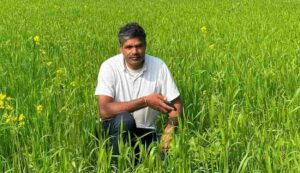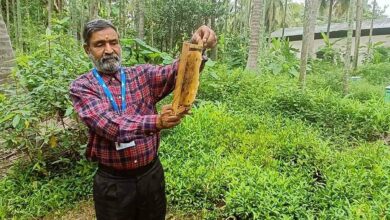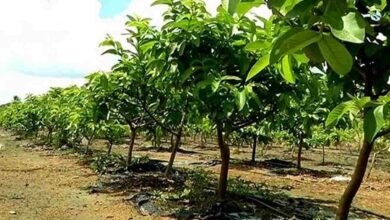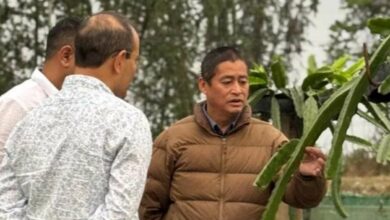Success Story: This farmer from Haryana did wonders by adopting natural farming
Success Story: A farmer from Dhana village in Jhajjar district, Haryana, named Anil Kumar, has been using sustainable agricultural methods, emphasizing methods that are resource-efficient and ecologically benign. He has increased the quality of his crops and his financial success by switching from chemical-based farming to natural farming methods, demonstrating that environmentally friendly farming can be sustainable and lucrative.

Making the Switch to Natural Farming
Anil took the brave step to abandon traditional chemical farming in 2015. He understood that overuse of agricultural pesticides was contaminating the environment, reducing soil fertility, and lowering crop quality. Above all, the poisons were endangering people’s health. Anil resorted to natural farming as a remedy, adopting methods that put an emphasis on soil preservation, environmental health, and sustainability.
His dedication to utilizing native seeds was a crucial component of his metamorphosis. “Natural farming is impossible without indigenous seeds,” says Anil. These seeds provide higher-quality crops, command higher market prices, and are more adapted to the local environment. Additionally, they help the food chain become more biodiverse.
Management of Water and Organic Inputs
The foundation of Anil’s farming is the use of organic inputs. He makes and uses homemade fertilizers such as sour lassi, mustard cake, Ghana Jeevamrit, Jeevamrit, and cow dung and pee. Without endangering the ecology, these organic materials not only improve the soil but also encourage sustainable crop development.
Anil’s agricultural methods heavily rely on water control. To make sure his crops get the proper amount of moisture, he builds raised beds and meticulously controls water use. This method makes his farm more productive and environmentally friendly by reducing water waste, improving soil health, and increasing agricultural yields.
Growing Wheat Profitably
On his 5-acre farm, Anil mostly crops wheat during the Rabi season. His method is simple yet efficient. In order to improve germination and inhibit the development of weeds, he lets the top layer of soil lose some moisture after irrigating the area. Instead of using chemical pesticides to manage pests and illnesses, he uses organic alternatives and keeps a constant eye on his crops.
The outcomes are striking. Anil often produces 10 to 17 quintals of wheat per acre, which is a substantial amount more than what is usually produced in natural farming. He sells his wheat for Rs 5000 per quintal because of its extraordinary quality. In order to generate significant extra revenue, he also turns the wheat into value-added goods like flour, semolina, and porridge, which may sell for up to Rs 7000 per quintal.
Affordable, Superior Farming
The affordability of Anil’s farming is among its most impressive features. He avoids the high costs of chemical inputs by producing his own organic fertilizers. Even though natural farming involves more physical labor, Anil thinks it’s worth it. “Natural farming is more lucrative, but it takes more effort. He claims that the crops are of higher quality and that the input costs are minimal.
Increasing the Crop’s Value
Anil not only grows wheat but also processes it into items that are in great demand, adding value to his supply. He may maximize his profits and reduce his need for middlemen by using this tactic. His 5-acre farm is now a very lucrative, sustainable model because of his emphasis on producing high-quality, value-added goods.
Promoting Sustainability and Raising Knowledge
The influence of Anil goes beyond his property. He often leads seminars and discusses his experiences with other farmers in his community as a mentor and supporter of natural farming. He illustrates the possible advantages of natural farming and persuades others to embrace eco-friendly methods via these exchanges.
According to Anil, natural farming is a means of enhancing public health and protecting the environment for coming generations, in addition to being a type of agriculture. “We can rescue the earth and enhance our health with natural farming. He claims that this is the most environmentally friendly way to farm.
A Model That Is Both Profitable and Sustainable
Anil Kumar’s path is proof of the strength of tenacity, creativity, and a dedication to environmentally friendly methods. He has developed a farming paradigm that is both profitable and ecologically beneficial by combining contemporary methods with age-old knowledge. His accomplishments cast doubt on the widely held notion that the only way to guarantee good yields and profitability is via chemical-intensive farming.





